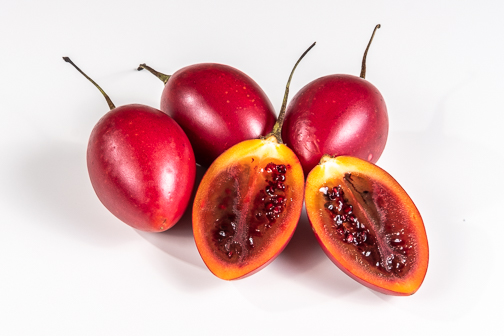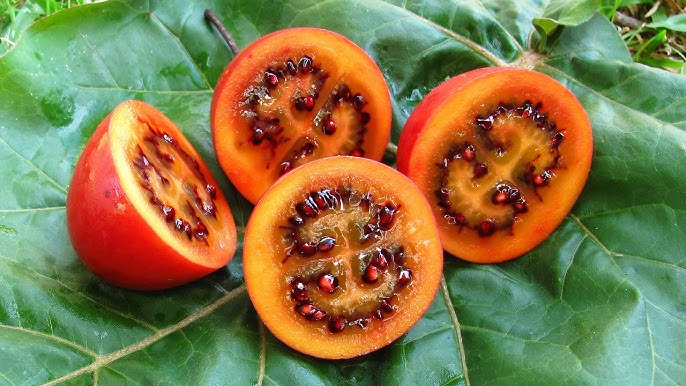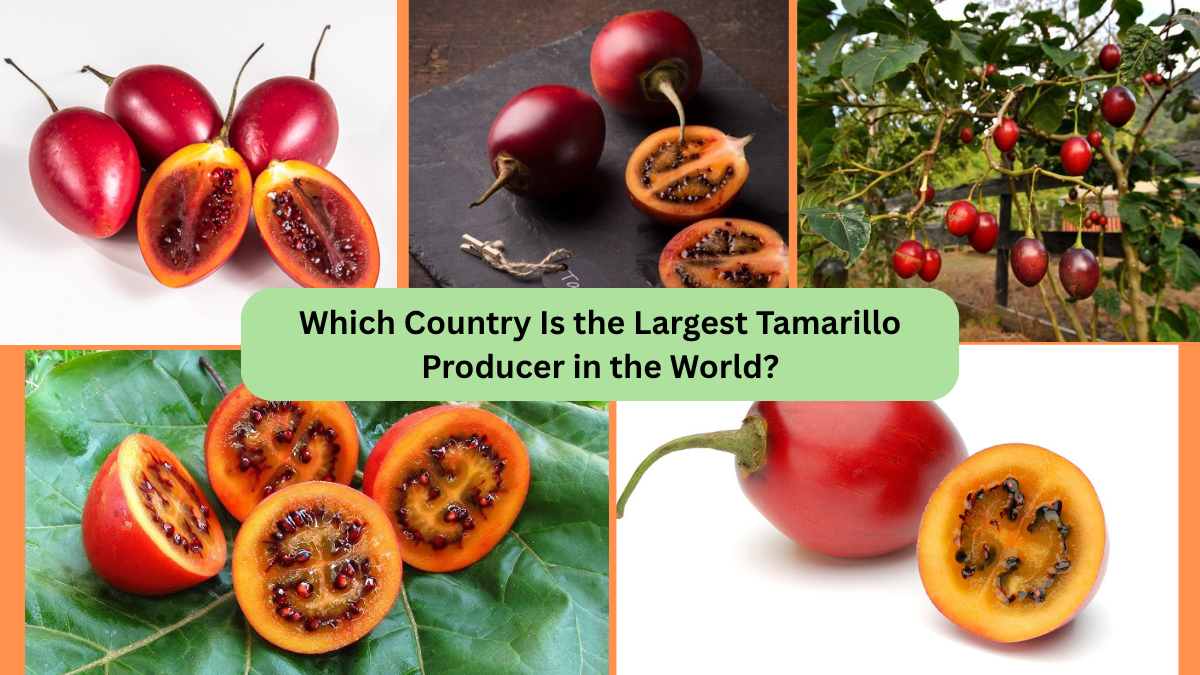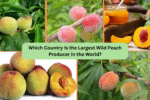The tamarillo, often known as the “tree tomato,” is one of the most intriguing and underappreciated fruits of the tropics and subtropics. With its tangy, slightly sweet flavor and vibrant red, orange, or yellow skin, tamarillo has slowly gained attention in international markets and gourmet kitchens alike. But where does this unique fruit thrive best? Which country leads the world in tamarillo production? In this comprehensive article, we’ll dive deep into the history, global production landscape, and reveal the top-producing nation of this exotic fruit.
What Is a Tamarillo?

Tamarillo (Solanum betaceum) is a small, oval-shaped fruit native to the Andes region of South America. Belonging to the Solanaceae family — which includes tomatoes, potatoes, and eggplants — tamarillos grow on small, fast-growing trees and can be found in various colors such as deep red, orange, and golden yellow.
Known for its tangy, sweet-tart flavor, the tamarillo is commonly eaten fresh, made into chutneys, sauces, jams, and even used in desserts and beverages. Its unique flavor profile, rich in vitamins A, C, and E, as well as antioxidants and minerals, makes it both a culinary delight and a nutritious option.
The History and Global Spread of Tamarillo
Originally cultivated in the Andean regions of Ecuador, Peru, Colombia, and Bolivia, tamarillo has been an essential part of local diets and traditional medicine for centuries. In the 19th and 20th centuries, European colonists and travelers introduced the fruit to other tropical and subtropical parts of the world.
Today, tamarillo is cultivated in countries like New Zealand, India, Kenya, South Africa, Australia, and parts of Southeast Asia. Its tolerance for a wide range of altitudes and climates makes it a versatile fruit for both highland and tropical farming systems.
The Largest Tamarillo Producer in the World: Ecuador

Ecuador stands as the largest producer of tamarillo in the world. With its ideal high-altitude, tropical climate and fertile volcanic soils, Ecuador offers the perfect growing conditions for this exotic fruit. Tamarillo farming is especially concentrated in the Andean provinces of Tungurahua, Loja, Imbabura, Chimborazo, and Cotopaxi.
Why Ecuador Dominates Tamarillo Production
1. Native Origins and Traditional Knowledge:
Being part of the fruit’s native habitat, Ecuadorian farmers possess centuries-old knowledge of tamarillo cultivation. This heritage enables them to maintain high-quality production standards and manage the crop efficiently.
2. Ideal Agro-Climatic Conditions:
Tamarillo trees thrive in altitudes ranging from 1,000 to 2,800 meters above sea level. Ecuador’s Andean highlands offer the precise balance of temperature, sunlight, and rainfall needed for abundant tamarillo harvests.
3. Domestic Consumption and Culinary Integration:
In Ecuador, tamarillo is a staple in daily cuisine. It’s widely consumed fresh, blended into juices, and incorporated into sauces for meat dishes. This strong domestic demand encourages large-scale cultivation.
4. Growing Export Potential:
Although most tamarillo production is consumed locally, Ecuador has begun exporting to niche markets in the United States, Europe, and neighboring Latin American countries. Its reputation for flavor-rich, high-quality tamarillos makes Ecuador a preferred supplier.
Other Major Tamarillo Producers
While Ecuador leads global production, several other countries contribute significantly to the world’s tamarillo supply:
Colombia and Peru:
As neighboring native countries, Colombia and Peru continue to cultivate tamarillos extensively, both for local consumption and limited export. The fruit is commonly featured in traditional Andean cuisine.
New Zealand:
New Zealand played a key role in popularizing the name “tamarillo” in the mid-20th century, renaming it from “tree tomato” for marketing purposes. Although it doesn’t produce as much as Ecuador, New Zealand is one of the largest exporters of tamarillo to Australia, the U.K., and Asian markets.
India:
In India, tamarillo is grown in the Nilgiri Hills, Sikkim, and parts of the Northeast. Its popularity is steadily increasing due to its health benefits and suitability for cooler, high-altitude regions.
Kenya and South Africa:
These African nations have integrated tamarillo farming into their highland agriculture. The fruit is mainly sold in local markets and is beginning to appear in health food and specialty stores.
Tamarillo’s Rising Global Popularity

As global consumers become more health-conscious and adventurous in their food choices, tamarillo has found its niche. Its high levels of antioxidants, beta-carotene, vitamin C, and minerals make it a valuable superfruit. It’s increasingly used in smoothies, health drinks, exotic salads, and desserts.
Additionally, its eye-catching starburst color and tangy flavor have made it a favorite among chefs and mixologists looking to create unique dishes and beverages.
Health Benefits of Tamarillo
Tamarillo isn’t just a treat for the taste buds — it offers several health benefits:
- Rich in Antioxidants: Protects against oxidative stress and supports overall health.
- High in Vitamins A, C, and E: Boosts immunity, promotes eye health, and rejuvenates skin.
- Low in Calories: An excellent choice for weight management.
- Regulates Blood Sugar: Its low glycemic index and fiber content help stabilize blood sugar levels.
- Supports Digestion: High fiber content aids in digestion and gut health.
Tamarillo in Culinary Culture

In Ecuador and Colombia, tamarillo is commonly blended into juices and enjoyed with breakfast. It’s also cooked into savory sauces known as aji de tomate de arbol, paired with grilled meats and seafood.
In New Zealand, tamarillo features in tarts, pies, jams, and chutneys. Its tangy flavor pairs well with both sweet and savory dishes, making it a versatile ingredient in modern fusion cuisine.
Challenges Facing Tamarillo Production
Despite its popularity in certain regions, tamarillo farming faces challenges:
- Perishability: Tamarillos have a relatively short shelf life, complicating long-distance transportation.
- Pest and Disease Management: The crop is vulnerable to pests like whiteflies and fungal diseases in humid conditions.
- Limited Global Awareness: Outside niche health food and gourmet circles, tamarillo remains lesser-known compared to other tropical fruits.
Conclusion

Ecuador, with its perfect Andean climate, rich volcanic soils, and deep-rooted agricultural traditions, rightfully holds the title of the world’s largest tamarillo producer. Its leadership is supported by strong domestic demand and growing international recognition.
As global consumers continue to explore new flavors and health-boosting superfoods, the tamarillo’s future looks promising. Whether enjoyed fresh, juiced, or as part of an exotic dessert, this tangy Andean gem offers a perfect blend of nutrition and flavor. And while other countries like Colombia, Peru, New Zealand, and India are making strides in tamarillo cultivation, Ecuador’s dominance in both quality and quantity remains undisputed.



